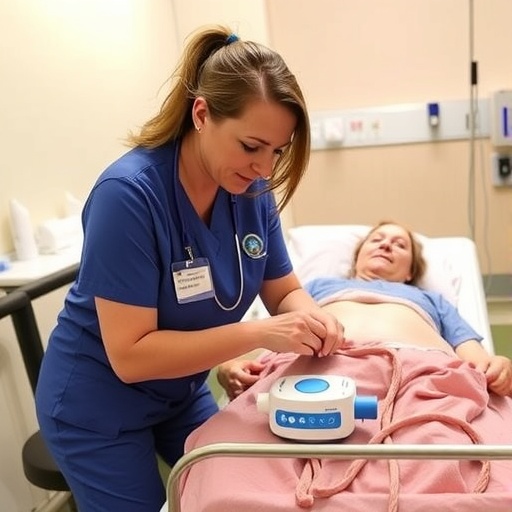Credit: Washington University in St. Louis
Delivering life-saving drugs directly to the brain in a safe and effective way is a challenge for medical providers. One key reason: the blood-brain barrier, which protects the brain from tissue-specific drug delivery. Methods such as an injection or a pill aren't as precise or immediate as doctors might prefer, and ensuring delivery right to the brain often requires invasive, risky techniques.
A team of engineers from Washington University in St. Louis has developed a new nanoparticle generation-delivery method that could someday vastly improve drug delivery to the brain, making it as simple as a sniff.
"This would be a nanoparticle nasal spray, and the delivery system could allow a therapeutic dose of medicine to reach the brain within 30 minutes to one hour," said Ramesh Raliya, research scientist at the School of Engineering & Applied Science.
"The blood-brain barrier protects the brain from foreign substances in the blood that may injure the brain," Raliya said. "But when we need to deliver something there, getting through that barrier is difficult and invasive. Our non-invasive technique can deliver drugs via nanoparticles, so there's less risk and better response times."
The novel approach is based on aerosol science and engineering principles that allow the generation of monodisperse nanoparticles, which can deposit on upper regions of the nasal cavity via diffusion. Working with Assistant Vice Chancellor Pratim Biswas, chair of the Department of Energy, Environmental & Chemical Engineering and the Lucy & Stanley Lopata Professor, Raliya developed an aerosol consisting of gold nanoparticles of controlled size, shape and surface charge. The nanoparticles were tagged with fluorescent markers, allowing the researchers to track their movement.
Next, Raliya and biomedical engineering postdoctoral fellow Debajit Saha exposed locusts' antennae to the aerosol, and observed the nanoparticles travel from the antennas up through the olfactory nerves. Due to their tiny size, the nanoparticles passed through the brain-blood barrier, reaching the brain and suffusing it in a matter of minutes.
The team tested the concept in locusts because the blood-brain barriers in the insects and humans have anatomical similarities, and the researchers consider going through the nasal regions to neural pathways as the optimal way to access the brain.
"The shortest and possibly the easiest path to the brain is through your nose," said Barani Raman, associate professor of biomedical engineering. "Your nose, the olfactory bulb and then olfactory cortex: two relays and you've reached the cortex. The same is true for invertebrate olfactory circuitry, although the latter is a relatively simpler system, with supraesophageal ganglion instead of an olfactory bulb and cortex."
To determine whether or not the foreign nanoparticles disrupted normal brain function, Saha examined the physiological response of olfactory neurons in the locusts before and after the nanoparticle delivery. Several hours after the nanoparticle uptake, no noticeable change in the electrophysiological responses was detected.
"This is only a beginning of a cool set of studies that can be performed to make nanoparticle-based drug delivery approaches more principled," Raman said.
The next phase of research involves fusing the gold nanoparticles with various medicines, and using ultrasound to target a more precise dose to specific areas of the brain, which would be especially beneficial in brain-tumor cases.
"We want to drug target delivery within the brain using this non-invasive approach," Raliya said. "In the case of a brain tumor, we hope to use focused ultrasound so we can guide the particles to collect at that particular point."
###
The research was recently published online at Scientific Reports; Raliya may be reached for interviews at [email protected]
The School of Engineering & Applied Science at Washington University in St. Louis focuses intellectual efforts through a new convergence paradigm and builds on strengths, particularly as applied to medicine and health, energy and environment, entrepreneurship and security. With 88 tenured/tenure-track and 28 additional full-time faculty, 1,200 undergraduate students, 1,200 graduate students and 20,000 alumni, we are working to leverage our partnerships with academic and industry partners — across disciplines and across the world — to contribute to solving the greatest global challenges of the 21st century.
Media Contact
Erika Ebsworth-Goold
[email protected]
314-935-2914
@WUSTLnews
############
Story Source: Materials provided by Scienmag




